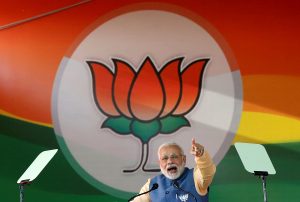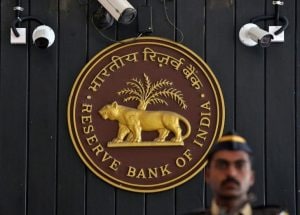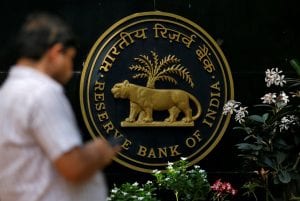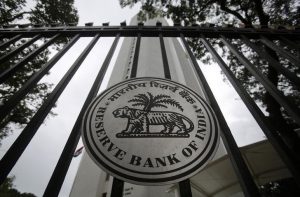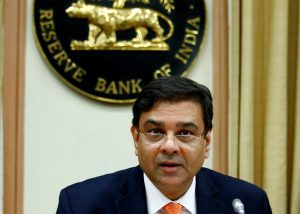Reserve Bank of India Minutes: Rising inflation, oil prices most important concerns for Monetary Policy Committee
Summary
The Reserve Bank of India (RBI) on Wednesday released minutes of the meeting of Monetary Policy Committee (MPC) held between June 4 and June 6, 2018. The RBI’s MPC unanimously voted to raise interest rate by 25 basis points at the meeting. The meeting was attended by all the members – Dr Chetan Ghate, Professor, …
The Reserve Bank of India (RBI) on Wednesday released minutes of the meeting of Monetary Policy Committee (MPC) held between June 4 and June 6, 2018.
The RBI’s MPC unanimously voted to raise interest rate by 25 basis points at the meeting.
The meeting was attended by all the members – Dr Chetan Ghate, Professor, Indian Statistical Institute; Dr Pami Dua, Director, Delhi School of Economics; Dr Ravindra H. Dholakia, former Professor, Indian Institute of Management, Ahmedabad; Dr Michael Debabrata Patra, Executive Director (the officer of the Reserve Bank nominated by the Central Board under Section 45ZB(2)(c) of the Reserve Bank of India Act, 1934); Dr Viral V. Acharya, Deputy Governor in charge of monetary policy – and was chaired by Dr Urjit R. Patel, Governor.
RBI governor Urjit Patel said, “A key risk to inflation cited in the MPC’s April 2018 resolution has since materialised; crude oil prices have risen sharply by over 12 per cent even as there was some moderation in recent days. On the positive side, food inflation has continued to be benign. On the whole,
11 inflation in March and April has behaved more or less on the lines of the path projected in the April resolution.”
On oil, he said, “The recent increase in oil prices, by impacting disposable incomes, may have some adverse impact on private consumption.”
Patel concluded, “Inflation risks have increased since the April policy. I, therefore, vote for an increase in the policy repo rate by 25 basis points. In view of prevailing uncertainties, it is apposite to maintain the neutral stance so as to respond to the evolving situation in a flexible manner.”
Chetan Ghate, member of the MPC, said, “Both the Reserve Bank of India and the Government of India should be congratulated in calibrating a monetary- fiscal mix that has helped engender this disinflation. Good luck helped with this outcome but so did good policy.”
He added, “Inflation targeting however can truly become successful if the inflation target and the inflation forecast become identical on a durable basis. Locking in the 4 percent medium target therefore requires continual vigilance.”
The RBI has projected retail inflation for 2018-19 to remain between 4.8 percent to 4.9 percent in the first half of the year followed by 4.7 percent in the second half.
Ghate further said, “The revival of growth brings new inflationary risks that need to be carefully watched. The RBI’s enterprise surveys suggest that upward pressures in input and staff costs are being marked by an increase in selling prices. Staff costs in services increased by 6.6%, and 11.6% in manufacturing compared to the last round of the survey.”
Explaining his rationale for an increase in repo rate, Ghate said, “The combination of cost-push and demand-pull factors at the current juncture has put one-year ahead inflation projections significantly above 4%. This warrants a monetary policy response. However, because of uncertainty surrounding the price of oil, and the nascent recovery of the economy, it would be opportune to take small steps.”
Pami Dua reasoned, “The upside risks to inflation include geopolitical risks associated with crude oil prices, increase in other global commodity prices, implementation of HRA revisions (state governments), increase in kharif minimum support prices, fiscal slippage and a weaker Indian rupee. The downside risks include forecast of a normal monsoon, and moderation in global commodity prices due to slowdown in global growth.”
Casting doubts on global growth recovery, Dua said the global manufacturing Purchasing Managers’ Index fell to a nine-month low in May, underscoring a moderating global industrial growth outlook. Growth in ECRI’s Indian Leading Exports Index is in a deepening cyclical downswing, suggesting that Indian export growth will remain in a cyclical downtrend at least for the next couple of quarters. Moreover, India’s domestic growth outlook is lacklustre, at best, according to ECRI’s Indian Leading Index.
She said, “In the meantime, with underlying inflation pressures in a cyclical upswing, according to ECRI’s US Future Inflation Gauge, US inflation has also been on the rise, and is now at the Federal Reserve’s 2% inflation target. At the same time, the unemployment rate has dropped to an 18-year low, spurring the Fed to keep tightening monetary policy.”
She concluded, “In India, with hardening of actual inflation, rising inflation expectations along with prevailing upside risks to inflation, I vote for an increase in the repo rate by 25 basis points while retaining the neutral stance.”
Ravindra Dholakia said, “Oil prices have further firmed up and geo-political developments indicate no respite likely on that count soon. For the next 12-18 months, the oil prices are likely to stay at higher level adding to the twin deficits (fiscal and current account) and inflationary pressures.”
He said, “We may note that the impact on consumers’ inflationary expectations of an oil price increase is almost 4 to 5 times higher than the similar increase in food prices and, therefore, we have to consider these numbers cautiously.”
He added, “The upside risks to inflation such as MSP revision and HRA revision implementation by states are likely to be countered by reconfirmed normal monsoon forecasts and the lack of fiscal space in several states. Oil prices could turn on either side and hence present a genuine risk. There are chances that headline CPI prints in the coming months (H1) may turn out to be
lower than expected by RBI (i.e. 4.8-4.9 per cent inflation) and in such a case, the inflation forecast 12 months ahead may come down. Although such possibilities are not ruled out, their chances are less.”
Michael Debabrata Patra said, “In my view, the prolonged period of staying on hold is denting the credibility of the MPC’s commitment to maintaining inflation at the centre of the target band.”
He said there is a rising risk that the public may start discounting this commitment: if it begins to believe that the MPC is willing to tolerate inflation in higher reaches, inflation expectations can be set adrift.
Patra said, “The major upside risks to inflation that the MPC has worried about in past resolutions are crystallising on an ongoing basis.”
Justifying his vote for a 25 basis points interest rate hike, he said, “In my view, the time has come for the MPC to act unanimously to raise the policy rate
by 25 basis points in a closing sliver of opportunity. This will demonstrate our resolve to return inflation to the centre of the target band. Monetary policy has to step in before it is too late and guide the economy along a non-accelerating inflation growth path.”
RBI deputy governor Viral Acharya said, “The inflationary pressure also seems to be experienced by the common man. The Reserve Bank of India (RBI)’s Inflation Expectations Survey (IES) of households reveals a uniform picture of hardening of inflation expectations whichever way one looks at the
data. Most notably, the 3-month ahead and 12-month ahead inflation expectations have increased sharply by 90 basis points (bps) and 130 bps, respectively, since the last survey. They are likely explained by the fact that petrol and diesel prices carry salience: fuel prices are in the face and generalise rapidly through transportation costs into prices of general goods
and services.”
On oil prices, he said, “A key uncertainty at present relates to the oil price development over medium-term horizon that monetary policy operates at. Robust global growth, OPEC and Russian supply cuts, supply shock in Venezuela, and geo-political uncertainty around the Iranian supply have
all pushed international crude prices uncomfortably high in a short span of time.”
Explaining his stance, Acharya said, “Considerable uncertainties
around oil and food prices as well as the playing out of trade wars and global financial market outcomes led me to keep the stance neutral. It will allow the MPC to determine in a flexible manner what further monetary policy response is warranted based on an ongoing assessment of the inflation situation, inflation expectations and growth prints in the coming months.”

Elon Musk forms several ‘X Holdings’ companies to fund potential Twitter buyout
3 Mins Read
Thursday’s filing dispelled some doubts, though Musk still has work to do. He and his advisers will spend the coming days vetting potential investors for the equity portion of his offer, according to people familiar with the matter









 Listen to the Article
Listen to the Article  Daily Newsletter
Daily Newsletter






